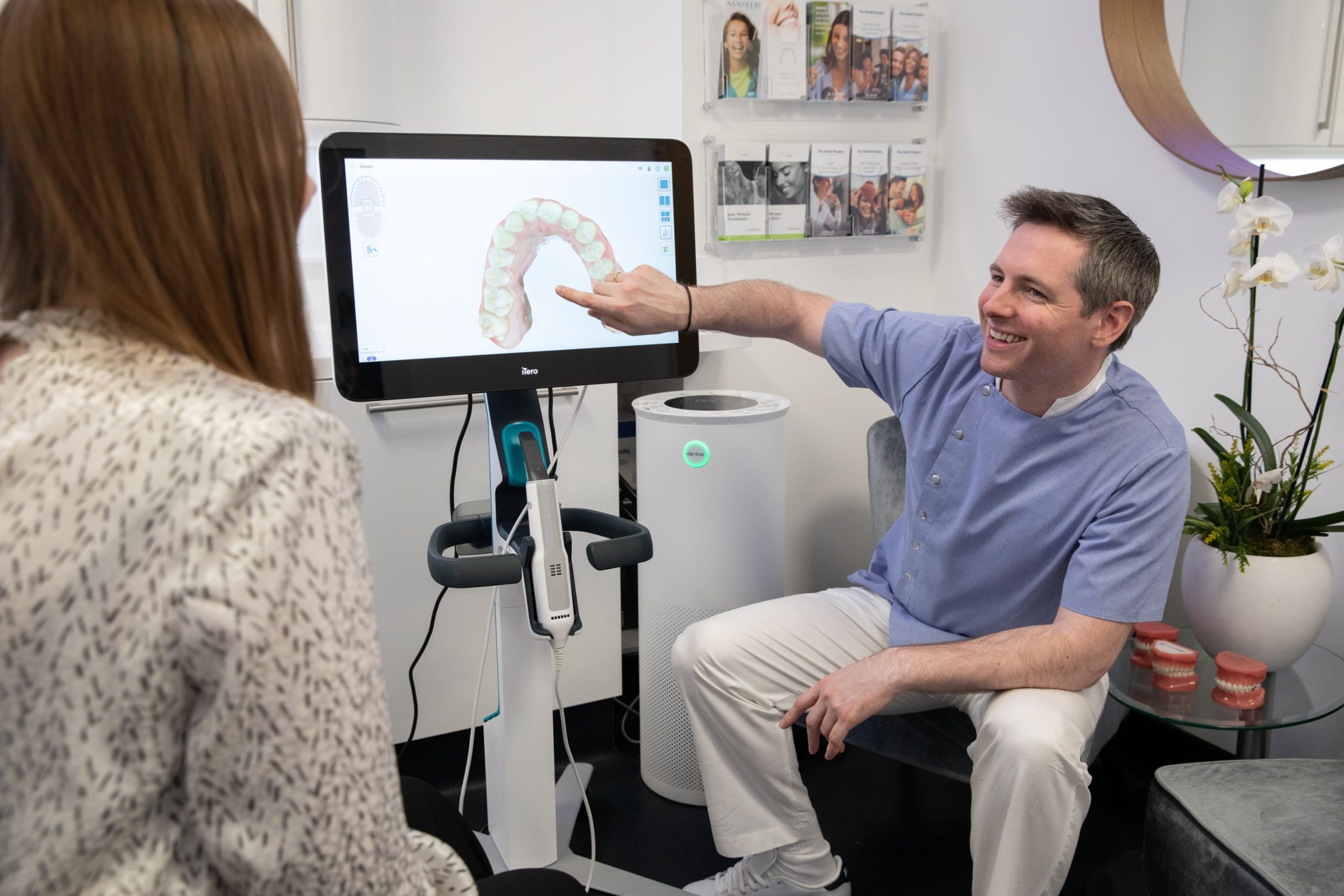- Categorised as:
- Teeth Straightening
How Do Fixed Braces Work?
When we look at how braces work there are two levels of answer.
There is a very basic answer. The mechanical details of how they work and what they are doing to the teeth. That answer would talk about how they apply continuous pressure to slowly move the teeth into the desired position, be that to improve a smile, correct crooked teeth and/or a misaligned bite.
We will explain that process in greater detail below, but we will also talk about the wider sense of how braces work.
Braces only work if the patient is committed to making them work. That is, they follow excellent dental hygiene protocol after the braces are fitted and then also use the retainer as advised on the removal of the braces.
Both parts are equally important. An orthodontist can make the perfect braces for patients’ needs but they are only worth fitting if that patient is going to look after their teeth both in terms of cleaning and also through making reasonable adjustments to their diet (for example going easy on those sugary treats).
The Mechanics Of How Braces Work
In this section, we are, unapologetically, not going to go into too much detail (but don’t worry, there will be some detail). The reason for this is that there are many types of braces, each suited to different end goals.
For example, braces could be made to remedy impacted canines, or it might be that removing small amounts of space between teeth is the aim – interproximal reduction to use the technical term. The patient might have an overbite or an underbite, or crooked teeth or any combination of irregularities.
The exact nature of the braces will be the result of a consultation with an orthodontist, including a clinical oral examination and additional material such as impressions of the patient’s teeth, and photos and x-rays of their mouth.
The braces will then be fitted or made to match the patient’s exact requirements, though it is worth noting that in some cases a removable retainer may be all that is required. Traditional braces with components fitted to the teeth are made up of…
What are the Components of Braces?
The brackets
These are the small squares that are bonded to each tooth, generally to the front of teeth although these can also be fixed to the back of the teeth (lingual braces) hiding them from view (sometimes a combination of the two are used – braces behind the teeth on the top teeth, which are more visible when talking, along with braces on the front of the bottom teeth, which are not as visible!). The brackets come in a variety of colours, even clear brackets which are less noticeable.
Modules
These are small elastic bands that wrap around the brackets and can be coloured. Some patients even change the colour at each appointment!
Separators
These can be fitted between teeth to create a small gap so that bands can be fitted around the teeth.
Arch-wires
These are the wires that attach to the brackets and guide the movement of the teeth. As with the brackets, they can be metal or white coated, the latter helping the braces to be less visible.
There are other elements that make up braces, some more common than others, however, at this stage there is little point writing 3,000 words on all the many small variations.
If you want to do further reading on different types of braces, we would recommend the excellent British Orthodontist Society website and specifically its range of downloadable leaflets.
Although it will obviously vary by patient, braces are typically in place for between one and three years, this is because it is a slow process moving teeth safely into the desired position rather than forcing them.
Once the braces are out, a retainer will then be worn, often full-time for a period of months, after that just overnight. The retainer becomes part of a patient’s lifelong care for their teeth, that’s because teeth are always moving and so there is a need to stop them slowly moving back to the alignment that required correction in the first place.
Who Are Braces For?
As glib as it sounds, braces can be right for most ages, although children need to have most of their adult teeth through and so between the ages of 9 and 14 is common for treatment.
Braces for adults are also increasingly common, in part due to more discreet options such as Invisalign, pictured above, which is a series of nearly invisible, removable aligners, each one specially designed for the patient and worn for a couple of weeks. The patient will wear a number of these aligners to gradually work towards the desired outcome.
Why There’s More To How Braces Work
We said that there is a partnership and this is what we mean. If anyone is going to have braces fitted, and they could be worn for years, then it’s important that they maintain excellent dental hygiene to avoid potential risks such as decalcification (white spots on teeth), permanent staining and potentially prolonged treatment.
Advice will be given on how best to brush, how to clean between the teeth and how to clean around the braces but that advice must be followed. If there are concerns that the patient cannot follow this dental hygiene, then having braces fitted might not be a sensible option.
On the plus side, having braces can actually lead to excellent, lifelong dental health. The brace wearer learns behaviours that they carry on long after the braces have gone, a child who wears braces not only has any irregularities corrected, they also get set on a path for a lifetime of dental health and with it, reduced risk of conditions such as Gingivitis or even the more aggressive periodontitis (which is where bacteria build up leads to bone and gum decay).
Anyone who has braces will require regular check-ups both from their dentist but also their orthodontist to check that the expected tooth movement is occurring.
How Braces Work To Improve Patient Health
That braces lead to improved dental health is clear, both from correcting any issues such as a misaligned bite and also realigning crooked teeth and so making them easier to clean.
There are other established benefits too.
A majority of 12-year-olds in the UK are often embarrassed to smile or laugh because of their teeth, or they have experienced difficulty eating or cleaning teeth – that statistic coming in the latest UK Child Dental Health Survey.
It is safe to assume that if a child adopts behaviour to compensate for these problems, such as smiling with a closed mouth, eating only on one side of their teeth, covering their teeth when they speak, they can carry these through to adulthood and mar their confidence or create dental issues that may be costly to address in the future.
The following snippet from a parent talking to the British Orthodontic Society perhaps sums it up best.
The day the braces came of was a day that Joel and his mother won’t forget. The boy looking back in the mirror was unrecognisable. Joel asked his mother what the lines were around his eyes and when she said they were smile lines. He replied: “That’s probably why I’ve not noticed them before because I never used to smile.”
Do you have a specific question?
Get in touch with us today.



